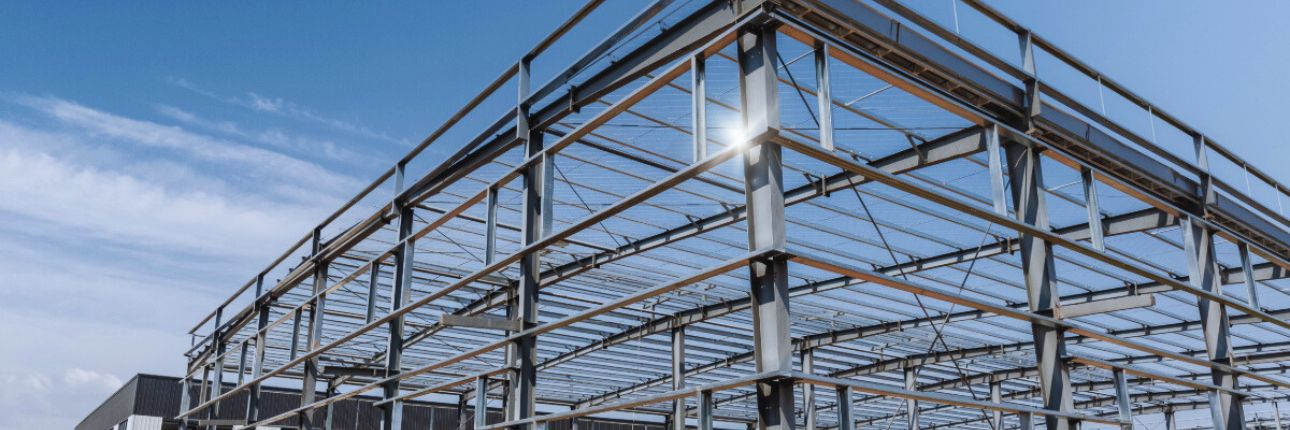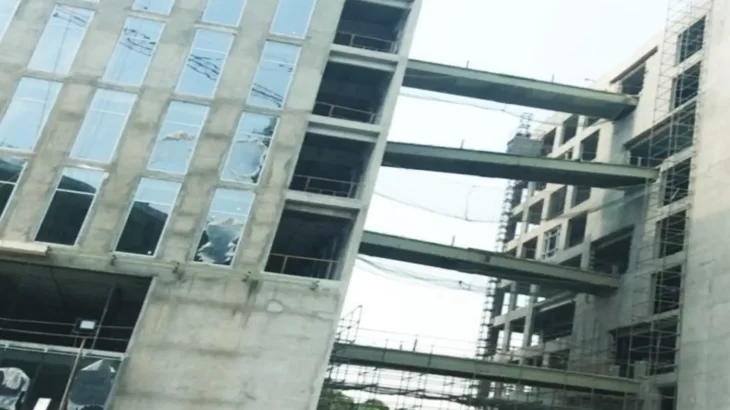
Structural steel is a versatile and crucial material in construction and engineering, offering strength, durability, and adaptability in various applications. Three essential structural steel components play significant roles in shaping the landscape of modern construction: sheet piles, crane rails, and W sections.
Sheet Piles In Structural Steel
Sheet piles are long, interlocking steel sections that are commonly used in civil engineering and construction projects, particularly for retaining walls, cofferdams, and other applications where water and soil containment is necessary. They come in various shapes, sizes, and materials, with the primary objective of providing structural support against lateral forces and water pressure.
Steel Bearing Piles
Bearing piles are used mainly to support vertical loads. Steel sections can be used as bearing piles where soil and ground conditions preclude the use of shallow foundations. This proves to be a fast and cost-effective solution to the distribution of vertical loads.
Some of the advantages include:
- Easy connection to the superstructures
- Easy installation at site
- Faster construction
- Flexibility with pile sizes as per the load capacity
- No limit to pile length
Uses of Sheet Piles:
Retaining Walls: Sheet piles are often employed to create retaining walls in situations where traditional retaining wall construction is not feasible due to space constraints or soil conditions.
Cofferdams: They are used to create temporary structures for construction work in waterlogged areas, such as bridge piers or boat docks.
Flood Protection: Sheet piles are used to create flood barriers and levees to protect communities from rising water levels during storms and floods.
Excavation Support: In deep excavations, sheet piles provide lateral support to prevent soil collapse and protect adjacent structures.
Foundation Support: They are used as part of foundation systems for buildings and other structures, especially in waterfront locations.
Crane Rails In Structural Steel
Crane rails are specialized steel sections designed to support and guide cranes, overhead hoists, and other lifting equipment. These rails are crucial for the safe and efficient movement of heavy loads in industries such as manufacturing, logistics, and construction. JSP is first Indian producer to produce value added Head Hardened Rails used in Metro Rails and High-Speed corridor projects.
Types of Crane Rails:
- I-Beams: These rails have a shape resembling the letter “I” and are commonly used for light to medium-duty cranes.
- Square Bar Rails: Square bar crane rails have a square cross-section and are typically used for medium-duty applications.
- Top Hat Rails: Top hat rails have a distinctive “top hat” shape and are commonly used for heavy-duty cranes in industrial settings.
- Channel Rails: Channel crane rails have a U-shaped cross-section and are well-suited for applications where ease of installation is a priority.
Uses of Crane Rails:
Overhead Cranes: Crane rails provide a stable track for overhead cranes to move loads horizontally within a facility, such as in manufacturing plants and warehouses.
Gantry Cranes: These rails support the movement of gantry cranes, which are commonly used in shipping ports and container yards.
Jib Cranes: For jib cranes, which have a fixed or pivoting arm, crane rails guide the movement of the crane’s hoist and load.
Maintenance Facilities: Railway maintenance facilities often utilize crane rails to move locomotives and carriages during repair and maintenance operations.
Construction Sites: Crane rails are used on construction sites to assist in the assembly of large structures, such as bridges and skyscrapers.
W Sections In Structural Steel
W sections, also known as wide flange beams or H-beams, are structural steel beams with a distinctive “W” shape when viewed from the side. They are one of the most commonly used shapes in construction due to their versatility and load-bearing capacity.
Types of W Sections:
- Wide Flange Beams (W): These are the most common type of W section, characteriszed by their wide flanges and a profile resembling the letter “W.”
- American Standard Beams (S): These beams have a narrower profile than wide flange beams and are often used in residential construction and lighter structural applications.
- Miscellaneous Beams (M): Miscellaneous beams include a range of specialiszed W sections used in specific applications, such as columns, bearing piles, and highway guardrails.
- Jumbo Beams: Jumbo W sections are larger and heavier than standard wide flange beams and are used for heavy-duty structural applications, such as bridges and industrial facilities.
Uses of W Sections:
Building Frames: W sections are commonly used as structural components in building frames and provide support for floors, roofs, and walls.
Bridges: They are used in the construction of bridges, providing the necessary strength to span long distances and support heavy traffic loads.
Industrial Structures: W sections are vital in the construction of industrial facilities, including manufacturing plants, warehouses, and power plants.
Crane Girders: In crane systems, W sections serve as the primary girders, supporting the crane’s structure and load.
Shipbuilding: W sections are used in shipbuilding to provide structural support for vessels and offshore platforms.
From the widest flat products to a whole range of long products, JSP Structurals has a unique product portfolio that caters to markets across the steel value chain. Sheet piles, crane rails, and W sections in structural steel are essential components in modern construction and engineering. Their various types and applications highlight their adaptability and significance in a wide range of projects, from waterfront retaining walls to industrial cranes and towering skyscrapers.

